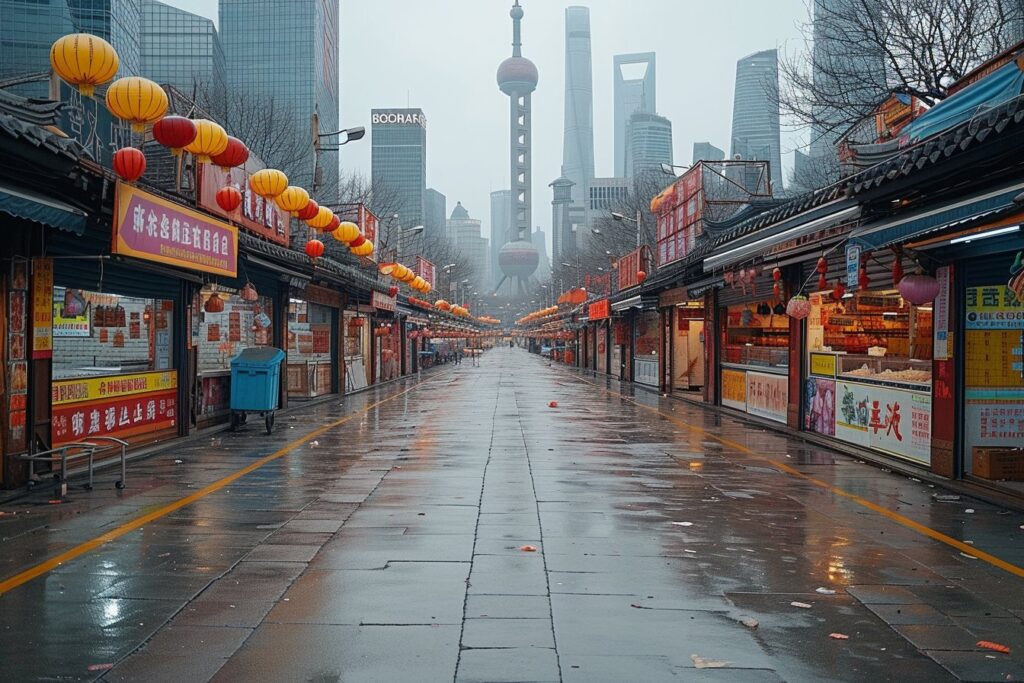Fading Consumer Price Index Indicates Economic Struggles
In a surprising turn of events, China’s Consumer Price Index (CPI) has dropped by 0.8% in January compared to the previous year, sinking deeper into deflationary territory at the fastest rate experienced in 15 years. This alarming decline has been attributed to various factors such as fluctuating holiday demand and lingering economic repercussions from the Covid-19 pandemic. With an ongoing real estate slump, stock market meltdown, weaker exports, and dampened consumer demand, China faces daunting challenges ahead.
Holiday Distortions Affect CPI Figures
An essential factor contributing to the sharp decline in the CPI for January is the distortion created by holiday demand. Given that the month played host to significant celebrations including the Lunar New Year, consumer spending witnessed considerable shifts resulting in an unstable landscape. Coupled with the lasting impact of Covid-19, such changes have led experts to predict fluctuations in prices moving forward.
Pork Prices Experience Steepest Plummet
- The price of pork, a staple in the Chinese diet, saw the greatest drop among all consumption items at a staggering 17.3%.
- This sudden downward trend signals potential concerns for the food production industry as it grapples with low consumer demand.
- On the contrary, tourism-related prices have risen by 1.8% this year, demonstrating the sector’s resilience amid prevailing economic pressures.
Producer Price Index Also Takes a Hit
Besides the falling CPI, China’s Producer Price Index (PPI) has also decreased by 2.5% from a year ago. This further amplifies the deflationary concerns prevalent in the country’s economy, and poses a challenge for policymakers to devise strategies to reinvigorate consumer demand and overall growth.
Economists Anticipate Rising Consumer Prices
Following the unstable CPI in January, economists predict that consumer prices will likely witness an increase from February onwards due to strong holiday demand during the Lunar New Year celebrations. Additionally, as China continues to recover from the impact of Covid-19, certain sectors such as tourism could see a boost in revenues and contribute towards an improved economic landscape.
Factors Driving Economic Recovery
- Lunar New Year celebrations boost several sectors such as travel, hospitality, and retail with heightened consumer spending.
- Reopening of international borders post-Covid aids in the resurgence of revenue streams for businesses dependent on tourism and global trade.
- Policymakers implement targeted stimulus measures to bolster specific industries and promote steady economic growth.
- Increased use of technology and digitalization helps streamline processes and operations across different sectors.
Consumption – A Key Driver of China’s Economy
Ultimately, it is evident that consumption will play a pivotal role in determining China’s economic trajectory this year. As government authorities and financial institutions scramble to formulate solutions to counteract ongoing deflationary issues, all eyes are fixed on the ability of consumers to revive dwindling demand and stimulate growth.
Challenges Remain Despite Glimmers of Hope
While there are clear signs pointing towards an upward trend in consumer prices, the fact remains that China’s economy faces significant challenges ahead. Monitoring the situation closely and adapting to changes as they arise will be crucial for the country’s policymakers in their attempt to overcome deflationary pressures, maintain stability, and pave the way for a sustainable future.
In conclusion, China’s alarming drop in the Consumer Price Index raises concerns about its economic health amid waning consumer demand. While there is hope that consumption can rebound in the coming months thanks to factors such as holiday celebrations and pandemic recovery measures, it remains uncertain how effectively these developments will counteract current deflationary issues. Navigating this complex scenario will require adaptability and prudent decision-making from both authorities and businesses alike.


